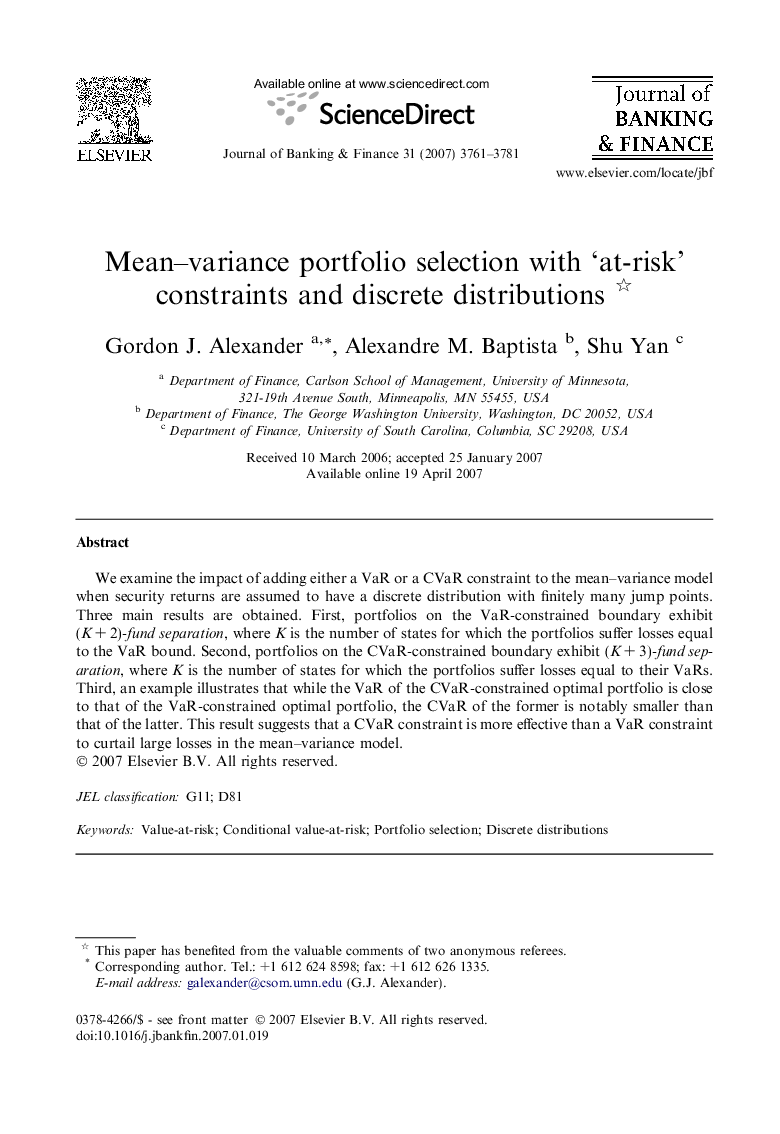| Article ID | Journal | Published Year | Pages | File Type |
|---|---|---|---|---|
| 5091230 | Journal of Banking & Finance | 2007 | 21 Pages |
Abstract
We examine the impact of adding either a VaR or a CVaR constraint to the mean-variance model when security returns are assumed to have a discrete distribution with finitely many jump points. Three main results are obtained. First, portfolios on the VaR-constrained boundary exhibit (KÂ +Â 2)-fund separation, where K is the number of states for which the portfolios suffer losses equal to the VaR bound. Second, portfolios on the CVaR-constrained boundary exhibit (KÂ +Â 3)-fund separation, where K is the number of states for which the portfolios suffer losses equal to their VaRs. Third, an example illustrates that while the VaR of the CVaR-constrained optimal portfolio is close to that of the VaR-constrained optimal portfolio, the CVaR of the former is notably smaller than that of the latter. This result suggests that a CVaR constraint is more effective than a VaR constraint to curtail large losses in the mean-variance model.
Related Topics
Social Sciences and Humanities
Economics, Econometrics and Finance
Economics and Econometrics
Authors
Gordon J. Alexander, Alexandre M. Baptista, Shu Yan,
